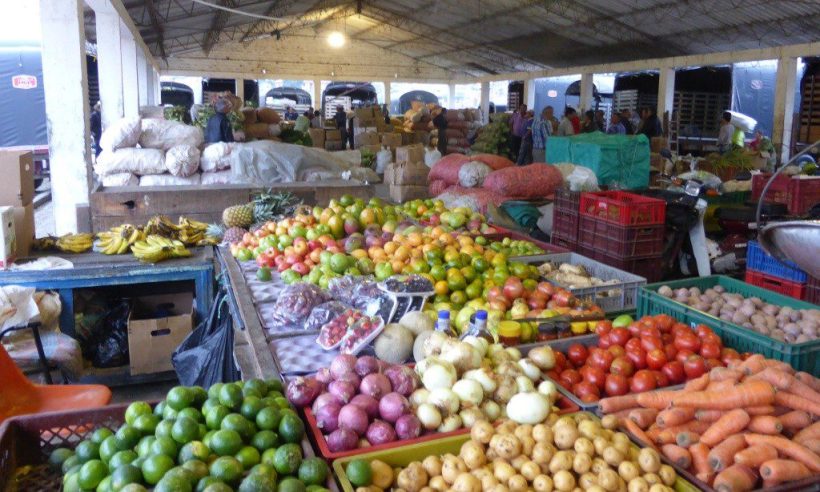Colombia’s Annual Inflation Rises to 5.18% in September, Surpassing Analyst Expectations
Colombia’s annual inflation rate increased to 5.18% in September 2025, up 8 basis points from the previous month, according to data compiled by Grupo Cibest and sourced from the National Administrative Department of Statistics (DANE). The monthly inflation rate reached 0.32%, marking the third consecutive month of acceleration and the highest reading since February. This figure exceeded the consensus forecast of 0.24% month-over-month.
Inflation Concentrated in Services and Regulated Segments
Approximately 75% of the monthly inflation was concentrated in the services and regulated segments, which together contributed 24 of the total 32 basis points. Indexation effects—where prices are adjusted based on past inflation—remain a significant challenge to achieving the Central Bank’s (Banco de la República) target range of 2%–4%.
Services inflation declined for the second consecutive month, falling 11 basis points to 5.82% year-over-year in September. The monthly increase of 0.36% was slightly above the historical average for September (0.23%). The main contributors were higher rents (+0.38% MoM), fixed and mobile communication services (+1.60%), effective rents (+0.36%), school transportation (+2.71%), and restaurant meals (+0.12%).
Regulated prices reversed a four-month downward trend, accelerating to 5.29% year-over-year from 4.96% in August. The 0.37% monthly increase, below the historical average of 0.52%, was driven by higher tuition fees in education and increased electricity rates. Gas and sewerage tariffs also contributed to the rise.
Goods inflation continued its upward trajectory, marking eight consecutive months of acceleration to 2.27% year-over-year, the highest level since April 2024. The category posted a 0.31% monthly rise, slightly above the historical average of 0.27%. Key drivers included beer and soda (+1.56%), pharmaceuticals and cosmetics (+0.84%), hygiene products (+0.51%), household goods (+0.60%), and clothing (+0.47%). Lower prices for cell phones (-2.00%) partially offset these increases, supported by currency appreciation.
Food Inflation and Major Spending Divisions
Food inflation accelerated for the third consecutive month, primarily due to processed food prices being affected by higher input costs. In September, input costs rose 0.17% month-over-month, bringing annual inflation in this category to 6.17%, below the historical average for the month (0.27%).
Perishable food prices fell after two months of increases, with a 0.09% monthly variation, well below the September historical average (0.53%). Fresh fruit prices rose 2.38%, with notable increases in grapes (12.25%), plantains (3.72%), carrots (9.93%), and oranges (6.12%).
Processed food prices accelerated to 6.06% year-over-year from 5.80%, reflecting a 0.20% monthly increase. The strongest contributions came from prepared meats (+1.75%), coffee (+1.47%), and cheese (+0.67%), while declines in rice and pork mitigated the overall result.
Inflation by major spending divisions showed the following year-over-year changes:
- Food and Non-Alcoholic Beverages: 6.20%
- Alcohol and Tobacco: 6.38%
- Clothing and Footwear: 2.15%
- Housing and Household Services: 4.84%
- Furniture and Household Goods: 3.31%
- Health: 5.99%
- Transport: 5.05%
- Communication: 0.56%
- Recreation and Culture: 1.73%
- Education: 7.30%
- Restaurants and Hotels: 7.47%
- Miscellaneous Goods and Services: 4.42%
Risks and Outlook
Core inflation (excluding food) continued its downward trend for the fourth month, while non-food regulated prices accelerated for the third consecutive month. Inflationary pressures remain elevated due to indexation effects and the absence of favorable base effects in the near term.
Upside risks to inflation persist, particularly regarding the pace of convergence toward the Central Bank’s target range. These risks include ongoing indexation dynamics, potential wage adjustments in 2026, transmission lags of cost pressures, and possible climate-related disruptions toward year-end.
Grupo Cibest projects that inflation will close 2025 around 5.1%, remaining above the Central Bank’s target for the fifth consecutive year. Given the board’s cautious stance and acknowledgment of these risks, the policy rate is expected to remain stable in upcoming monetary policy meetings.
Data Sources and Methodology
All inflation figures are based on data from DANE and analysis by Grupo Cibest. The weights of the main components in the Consumer Price Index are as follows: food (15.06%), goods (18.56%), regulated items (17.36%), and services (49.04%).
Headline photo: Farmer’s Market in Marinilla, Colombia (photo © Loren Moss)




























